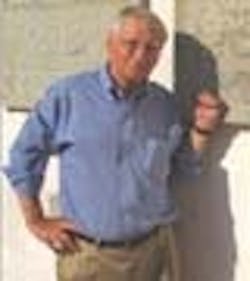This is the story of a small-town boy who dreamed of being a scientist. Harold McNairan icon of modern chromatography, as one website puts itwas born in Miami, Arizona in 1933. His father worked as a laborer in a copper mine and, when World War II started, his mother worked there, too. In high school, he was an athlete (two time Arizona High School tennis champion) but also a scholara class valedictorian in a school where, if you were cool, you didnt want to have brains, McNair says.
His good grades kept him from being drafted for the Korean war, and he went to the University of Arizona on a full scholarship. McNairs first taste of the big time came in 1957, at a $600 a month summer job working for Amoco R&D in Whiting, Indiana. Amoco was introducing gas chromatography under the guidance of A.J.P. Martin, who had been awarded a Nobel prize in 1952 for predicting the gas phase could be used in chromatography. Martin had since invented the gas density balance, the essential apparatus for estimating components in GC.
Harold McNair at the University of Tartu in Estonia, pointing
to a memorial of Mikhail Tswett, the inventor of chromatography. McNair presented a seminar at the university in 2007.
Under Martin, McNair packed columns and evaluated some 80 liquid phases for various chemicals, and fetched coffee and played Martins gopher. In the world of chromatography, this was a bit like hanging around the same clubhouse as Babe Ruth. Upon graduation from Arizona, McNair went to Purdue University, on another scholarship, to pursue a doctorate. He introduced GC to colleagues there.
Next, he received a Fulbright scholarship for a post-doc in the Netherlands in A.I.M. Keulemans lab, where he rubbed elbows with other chromatography pioneers such as Marcel Golay, inventor of the capillary GC column. McNair saw this as a pivotal momentthe small-town boy given scholarships to get a PhD and study what he loved in Holland, an epicenter of chromatography.
The European experience led to McNairs first real job with Esso R&D in Linden, New Jersey, where, among other things, he helped the company test for toxic chemicals in the wax of milk cartons. Then it was back to Europe to start the European operations of F&M Scientific, now the instrument division of Hewlett-Packard.
In 1968, McNair had had enough of the corporate world, and through his Purdue research professor, Dr. Warren Brandt, landed a professorship at Virginia Tech, where he became a teacher first, and a researcher second. Teaching is as important as research, he says. McNair has made many contributions to chromatography, and has been honored with myriad awards, but he has relished his role as a mentor to graduate students, preparing many of them for careers in the pharmaceutical industry.
My biggest kick was taking five or six students to the Pittsburgh Conference [Pittcon] and having people asking them for reprints of their articles, he says. Intelligence, opportunity and motivation, to McNair, are the secrets of scientific success, and he regrets the fact that the cost of higher education has become so great that it now limits many students. How does a scientist judge motivation? Do you really like playing in the lab? he asks his students. If you do, he says, then stay there.
McNair also regrets what he sees as the pharmaceutical industrys lack of commitment to individuals with college training in science. The industry is so focused on cutting salaries and experience, he says. A lack of proper training probably causes a majority of mistakes that bring FDA down on their heads. You can take the boy out of the country but not the country out of the boy. To encourage youths in his hometown of Miami (the one in Arizona), McNair has set up a scholarship that helps one senior each year go to college. Ive got this strong obligation to pay back what was given to me, he says.





